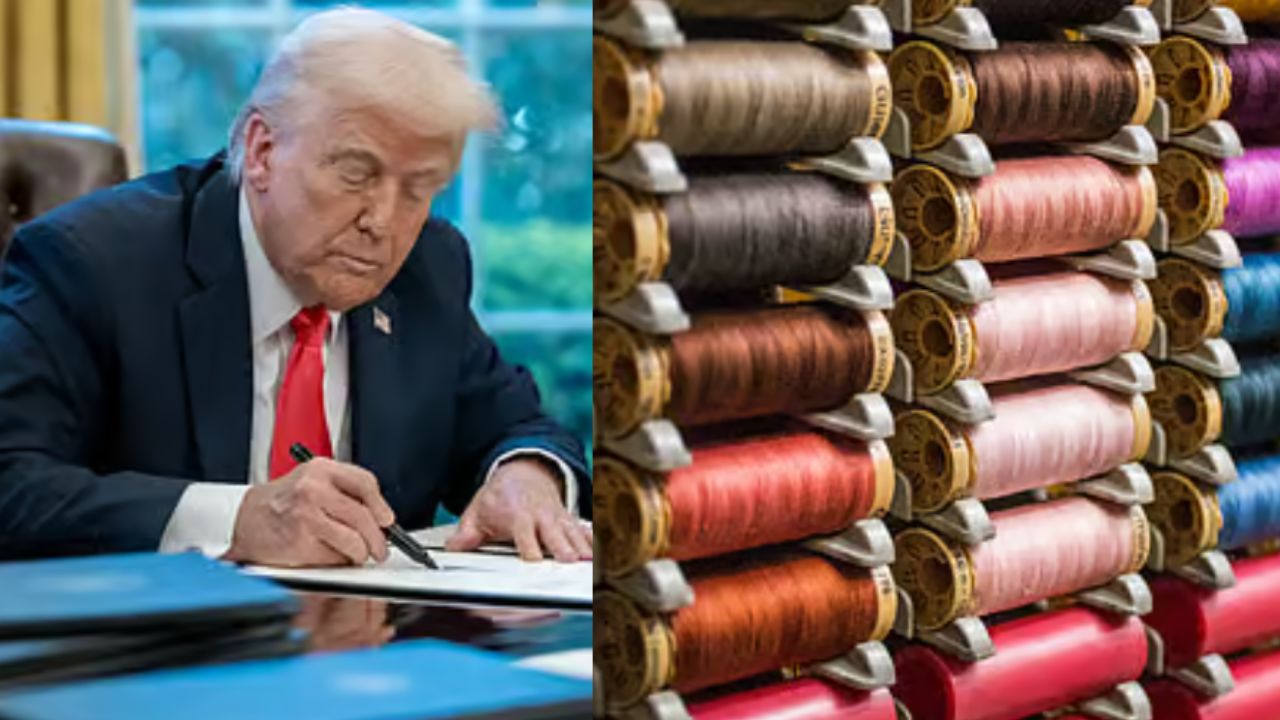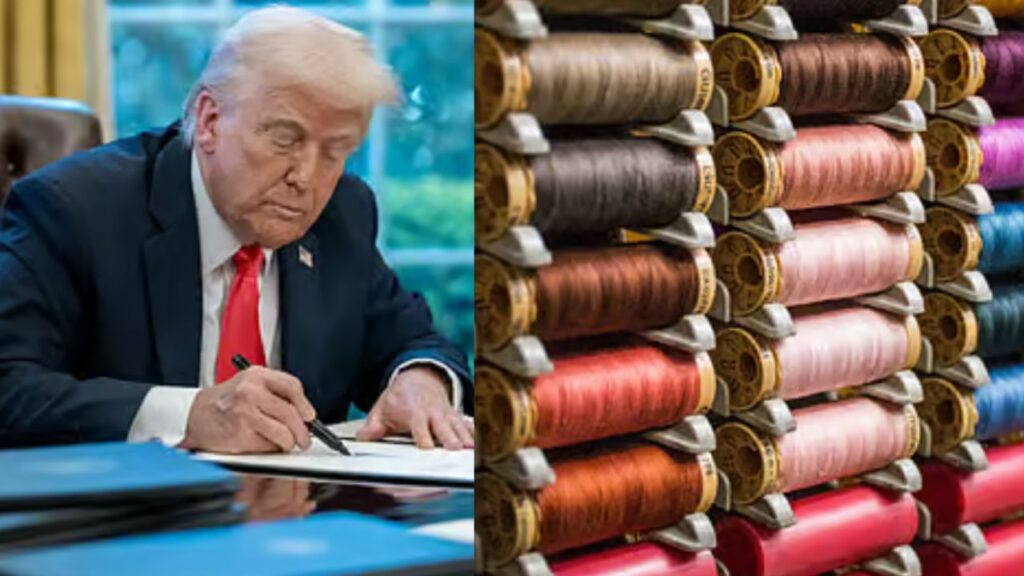
As global trade winds shift yet again, Indian textile exporters are bracing for the possible return of protectionist measures in the United States while simultaneously eyeing fresh opportunities in the United Kingdom through the much-anticipated Free Trade Agreement (FTA). With Donald Trump’s tariff-centric trade stance making a political comeback in US policy circles, exporters are finding themselves balancing the risks of higher duties with the potential benefits of zero-tariff access to the UK market.
Trump-Era Tariffs Back in Focus
During his previous term, former US President Donald Trump imposed steep tariffs on several categories of goods, targeting countries he accused of unfair trade practices. For India’s textile sector — which counts the US as one of its top export destinations — the threat of renewed tariffs could hit competitiveness, especially in price-sensitive segments like ready-made garments and home textiles.
Textile councils and industry bodies fear that a reintroduction of such measures could make Indian products more expensive compared to those from countries with preferential trade agreements with the US, such as Vietnam or Bangladesh. Exporters are therefore closely monitoring policy developments in Washington, mindful that any shift in tariff structures could require immediate adjustments in pricing and sourcing strategies.
UK FTA: A Potential Cushion
While the US market uncertainty looms large, the India-UK FTA — in its final stages of negotiation — is offering a silver lining. The agreement is expected to remove or significantly reduce tariffs on a wide range of textile products, potentially boosting Indian exports to the UK by making them more competitive against rivals from Turkey, Bangladesh, and EU member states.
Currently, Indian textiles face tariffs of up to 12% in the UK. The elimination of these duties could save exporters millions annually, freeing up capital for marketing, product innovation, and supply chain upgrades.
Industry Response: Diversification is Key
To navigate this mixed trade climate, many exporters are embracing a diversification strategy — not only in markets but also in product categories.
- Market Diversification: Companies are targeting newer geographies such as Latin America, Eastern Europe, and Africa to offset dependency on the US.
- Value-Added Products: Exporters are focusing on high-value, sustainable, and organic textile lines to attract premium buyers, thereby reducing vulnerability to tariff-driven price competition.
Industry experts note that while the UK market is significantly smaller than the US, its high-end consumer segment offers strong margins and brand-building opportunities.
Balancing Risks and Rewards
The Indian textile industry’s challenge lies in balancing the short-term risks from potential US tariffs with the medium-term benefits from the UK FTA. Large exporters are using forward contracts and currency hedging to manage volatility, while small and medium enterprises (SMEs) are banding together in export consortia to share market intelligence and reduce operational costs.

Government’s Role
The Indian government is actively supporting exporters by:
- Fast-tracking FTA negotiations with multiple countries.
- Offering production-linked incentives (PLI) to modernize manufacturing.
- Expanding export credit support to help SMEs manage cash flow disruptions.
Commerce ministry officials have hinted that if US tariffs return, India could explore reciprocal measures or seek exemptions through diplomatic channels.
The Road Ahead
The next year will be crucial for Indian textile exporters. If Trump-era tariffs return in full force, the US market may become less profitable, pushing exporters to double down on Europe, the UK, and emerging economies. On the flip side, a successful India-UK FTA could open a lucrative tariff-free corridor, providing the industry with much-needed momentum in a competitive global market.
For now, India’s textile exporters are treading a fine line — adapting to geopolitical shifts, investing in product innovation, and positioning themselves to seize opportunities wherever they arise.



